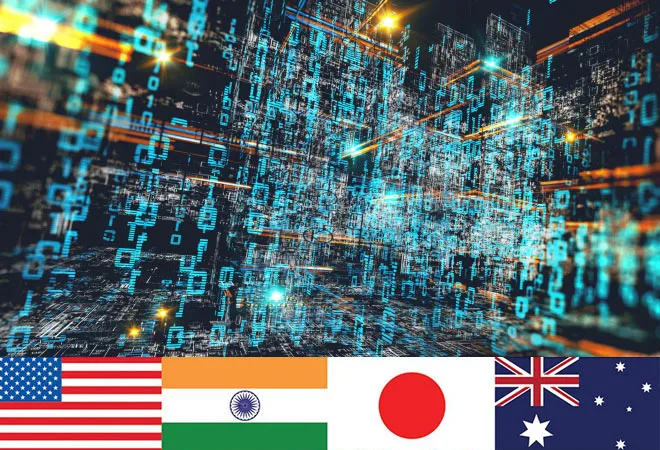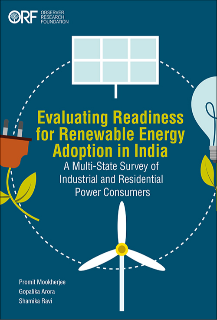
The Quad Critical and Emerging Technology Working Group is approaching the two-year mark since its inception at the Quad Leaders’ Summit in March 2021. The Working Group has a fairly broad mandate, encapsulating supplier diversification, tech standards, monitoring trends, and principles for design, development, and use. Subgroups on Artificial Intelligence (AI), 5G, biotech, semiconductors, supply chains, among others, all operate under the aegis of the working group.
Each subgroup has been meeting each month and the Quad Tech Group meets regularly in addition to these. Some subgroups have seen more activity than others. The 5G subgroup, led by Japan, is notable among these, with the announcement of a memorandum of cooperation on 5G Supplier Diversification and Open RAN. The Quad countries also introduced the Quad Cybersecurity Partnership, a Quad Semiconductor Supply Chain Initiative, and an International Standards Cooperation Network to share information on technical standards.
The 5G subgroup, led by Japan, is notable among these, with the announcement of a memorandum of cooperation on 5G Supplier Diversification and Open RAN.
Although countering China is an implicit part of the Quad’s raison d'etre, the high-octane expansion of the Quad tech partnership comes from how it complements the broader strategic and economic objectives of each Quad member. With this flurry of announcements, therefore, it is worth taking a step back to assess how and where the Quad fits into India’s vision for emerging technologies.
A. Economic partnerships with trusted partners in the Indo-Pacific region
For India, the Quad is not the end in itself but a launchpad for broader and deeper trade and technology engagement in the Indo-Pacific, including the Association of Southeast Asian Nations (ASEAN). Especially, when it comes to tech and digital transformation, the Quad can play a larger role as a pillar supporting free, open, and inclusive technology flows and regimes in the Indo-Pacific. In the words of Prime Minister Modi, “ Quad is carrying a constructive agenda for the Indo-Pacific region. This will further strengthen the image of the Quad as a 'Force for Good’.” This is in contrast with, say, how New Delhi engages with the Shanghai Cooperation Organisation (SCO). At the SCO, India is engaging out of necessity, keeping a channel open to an increasingly isolated Russia and a belligerent China. India has consistently refused to be a part of China’s Belt and Road Initiative, urging instead for “mutual trust” and the need for “reliable, resilient, and diversified supply chains”.
When it comes to tech and digital transformation, the Quad can play a larger role as a pillar supporting free, open, and inclusive technology flows and regimes in the Indo-Pacific.
B. Technology standards that reflect Indian interests
New Delhi recognises the need to be present and proactive at tech standards bodies. The 5G Steering Committee’s 2018 report recommended that the “Government…increase India’s profile in global standards”. The Ministry of Electronics and IT’s AI Committee reports repeatedly emphasise engagement with IEEE and ISO. The Quad helps amplify India’s interests, both by virtue of its engagement with the Quad Critical and Emerging Technology Working Group, but also when its position diverges from that of the Quad. As evidenced by the saga of the 5Gi standard, which took India’s partners by surprise, India was able to pressure the 3GPP to integrate 5Gi into Release 17 in part due to “its consequential role as a partner in emerging global coalitions, including Quad processes.”
C. Taking Indian technology solutions to the world
Atmanirbhar Bharat is often misconstrued as isolationism and protectionism. In reality, the animating idea is to make India’s supply chains resilient to shocks, whether caused by disasters and pandemics, or geopolitics and policies. Simultaneously, New Delhi’s policies aim to move India up the value chain by pitching India as a favoured, trusted supplier. India’s IT exports are dominated by services, however, there is a concerted effort to set up a robust production base that would export to the world. The National Policy on Software Products (2019), the Scheme for Promotion of Manufacturing of Electronic Components and Semiconductors (SPECS), the Modified Electronics Manufacturing Clusters (EMC 2.0) Scheme, among others, all form puzzle pieces of this larger goal. Setting up a domestic tech production base will require significant capital, specialised knowledge, and skills, as well as massive investments in infrastructure. In other words, the transformation of India into a cutting-edge technology hub is a long game, and trusted, reliable partnerships like those with the Quad countries, will be pivotal.
The Quad helps amplify India’s interests, both by virtue of its engagement with the Quad Critical and Emerging Technology Working Group, but also when its position diverges from that of the Quad.
The Quad is a canvas for each member state’s vision for the Indo-Pacific as well as its own place within it. The Quad Critical and Emerging Technology Working Group has, in the past year and a half, served as space for the four countries to lay the groundwork for cooperation on an array of technological areas. Can Quad tech cooperation now move from summitry to joint courses of action?
The views expressed above belong to the author(s). ORF research and analyses now available on Telegram! Click here to access our curated content — blogs, longforms and interviews.




 PREV
PREV


